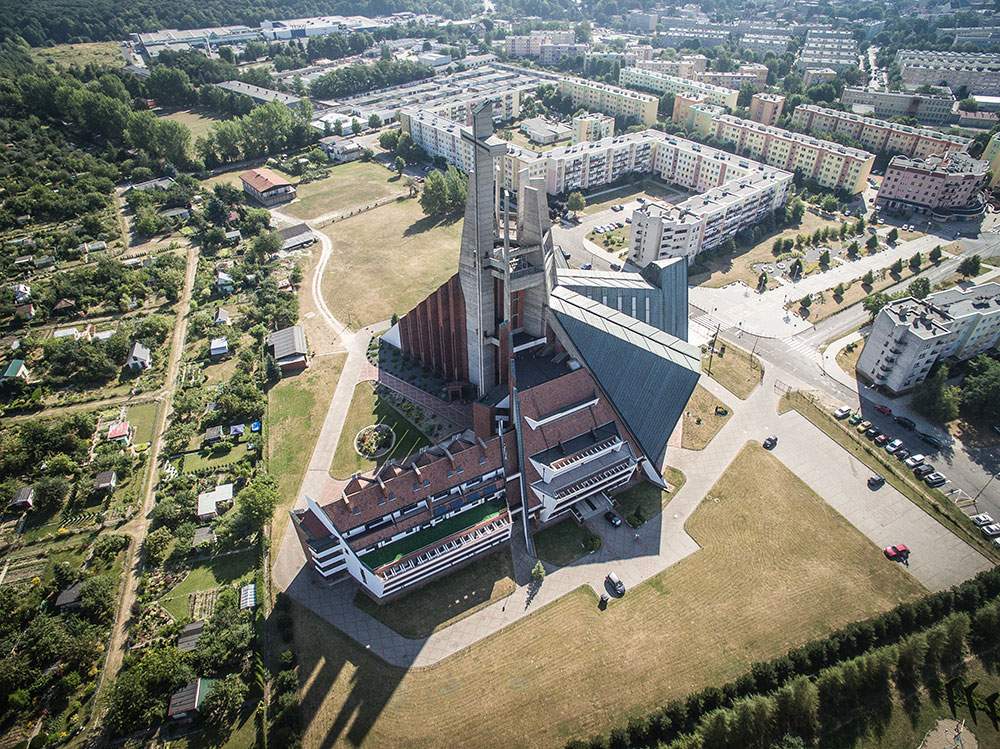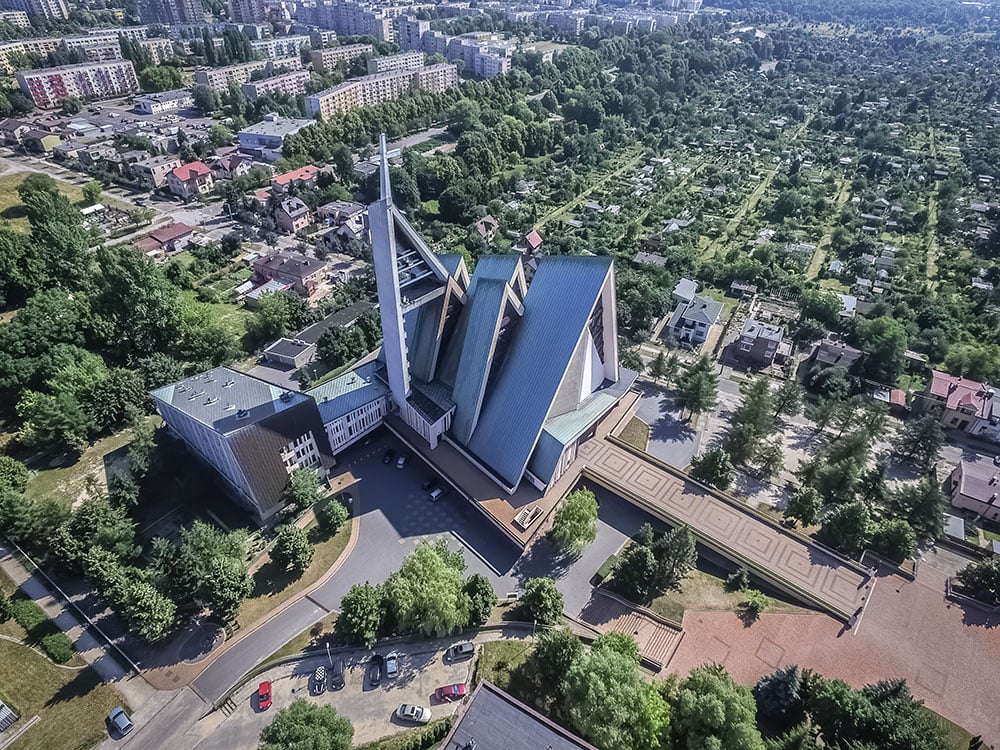Palace coups: reconstructing history in the heart of Berlin
On Berlin’s Museum Island, a controversial architectural monument is in the process of completion: the reconstruction of the Berliner Stadtschloss (Berlin City Palace), now renamed the “Humboldt Forum”. The project, which encapsulates the city’s vexed relationship with its social, cultural and political heritage, also has much to tell us about the way Berlin — and Germany — sees itself in post-socialist Europe.
First completed in 1451, the Stadtschloss became the principal residence of the Hohenzollern kings of Prussia during the 18th and early 19th century. It was heavily damaged during the Second World War and subsequently replaced by the GDR’s Palast der Republik (Palace of the Republic) in 1976. Following reunification, the German government ordered the destruction (completed in 2008) of this socialist monument, erasing a historical testament to Germany’s Cold War division. About a decade before this act of architectural iconoclasm, an influential lobby of private investors had gathered plans for the reconstruction of the original Stadtschloss, convincing both government and private sponsors to agree on a vast £500m project that, by 2019, aims to recreate an architectural frame for Berlin’s new cosmopolitan self-presentation. The new Schloss is presented as a monument to German history only selectively remembered.
Accomodating both chambers of the East German parliament, and providing public space for over 5,000 people in its auditoria, restaurants, galleries and discothèque, the GDR’s Palast was built on Berlin’s Museum Island. Located in the central district of Mitte and housing five world-famous museums including the Pergamon, the area is arguably the city’s public cultural centre. Appropriately enough for a site dominated by museums, this is a space layered by different temporalities in which phantom palaces, imperial and communist, are built on top of each other.
Despite a strong focus on memory culture in post-Cold War Germany, any adaptation or integration of this intact socialist glass palace was rejected by the unified government
Yet despite sitting amongst buildings dedicated to preserving artefacts of the past, and despite a strong focus on memory culture in post-Second World War and post-Cold War Germany — post-‘89 words added to the German vocabulary include Vergangenheitsbewältigung (coming to terms with the past) and Ostalgie (nostalgia for the east) — any adaptation or integration of this intact socialist glass palace was rejected by the unified government.
This refusal to commemorate aspects of the nation’s recent past has been variously approached by artists and vested interests. Stills from a film of the destruction of the Palast appear as puncta in the eyes of those who witnessed its public trial and execution. Lars Ramberg’s large installation Palast des Zweifels (Palace of Doubt) placed the word “doubt” in large letters on top of it, transforming the defunct architecture into a monument for Germany’s uncertainty over its new identity. Between 2006 and 2008, the Palast’s last days were presented as ruin to the public. The temporality of the demolition was theatrically stretched and thereby politically leveraged for all to see, a visible iconoclasm. The Palast’s own “dismantling”, a euphemism for “demolition”, restaged the Allied levelling of Berlin for a reunified yet often unresolved German nation today. A viewing platform that reached the length of a city block allowed this slow tearing down of the spectacular ruin of the former communist regime to be witnessed. One of those who stood on the platform to witness “the last days of the empire” was filmmaker Reynold Reynolds. The Senate Department for Urban Development streamed the process of demolition via webcam.
In a promotional video made for an early stage of the Humboldt-Forum, the city’s palace, accompanied by ambient techno music, gets whisked back and forth in time and through space across the site on the island. Glorious palatial moments from 1910, 1925 and 1930 appear as stills. These Potemkin structures complete the as-yet skeletal centre being rebuilt behind. Some horrified witnesses of the centre’s ruins in 1945 flick by and 1950 is hurried in. Unter den Linden — the central avenue — was a bustling centre of East Berlin and was crowned by the Palast der Republik, yet in this promo the years 1978-2009 are skipped in a beat of techno, leaving only the new tabula rasa for the city centre. Architect Franco Stella’s winning design for the new Stadtschloss reflects a desire to reconstruct the image of the paternal Prussian monarchy. The dome and façades, complete with hand-crafted replicas of Prussian heraldry, are carefully rendered within a larger model of how the whole reconstructed centre of Berlin will look.
As well as restaurants, cinemas and a theatre, the Humboldt Forum will house an ethnographic museum combining the collections of current Ethnological Museum and the Museum of Asian Art. The contradiction contained in recreating a Humboldtian Wunderkammer (cabinet of curiosities) is in the claim that it will be full of “ideas, not ideologies”. The conceptual frame — a reflection on colonial object histories, the involvement of indigenous artists and “source communities” — seems to claim a kind of inclusive approach: “A Palace in Berlin for the Whole World”, as one official publication has it. And the whole world in a palace in Berlin. The Forum will frame its colonial collections in cosmopolitan, neo-Enlightenment terms that purport to transcend the notion of a purely national collection, while resting on the difficult heritage of its past monumentality and imperial centrality.
In a neatly neutralised statement, the Federal Government Commissioner for Culture and the Media Monika Grütters speaks of the new Forum as allowing visitors to experience “the tradition of the Enlightenment; the idea of self-assured, open-minded encounters between the world’s peoples; peaceful dialogue as an ideal”. But the tradition of Enlightenment certainly did not certainly not create “open-minded encounters»” in colonial settings themselves, and it is remarkably uncritical to frame a 21st century ethnological museum as motivated, in Grütter’s words, by “a virtually insatiable thirst for knowledge about the world… [a] thirst for knowledge about the Other”.
So the rebuilt Stadtschloss/Forum combines two paradoxical aspects: in recreating the imperial Prussian past, it recreates to a “vertical” sense of aristocratic historical inheritance, whilst the decision to house an ethnographic museum there appeals to the (supposedly) “horizontal”, post-imperial cosmopolitan nature of modern Berlin. The extent to which this cosmopolitanism “will inevitably make us think about the causes and consequences of the world order dictated by Europe in the 18th and 19th century”, as Hermann Parzinger, chairman of the Prussian Cultural Heritage Foundation claims, remains to be seen. The new-old Schloss purports to “contain” the world, but this claim is made on problematic grounds, among the cleared socialist rubble of another dead palace, hastily discarded.
Text: Jonas Tinius and Khadija von Zinnenburg Carroll
Top image: Franco Stella, Humboldt Forum, due for completion in 2019

